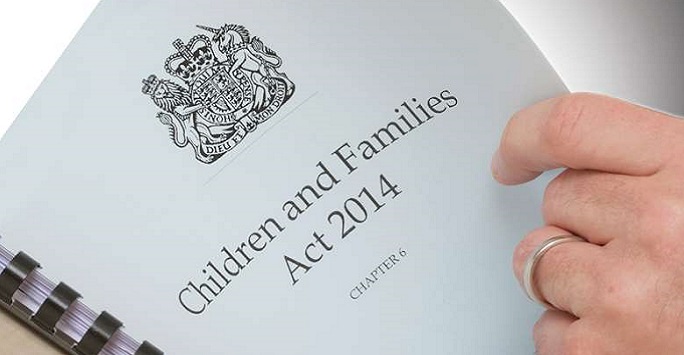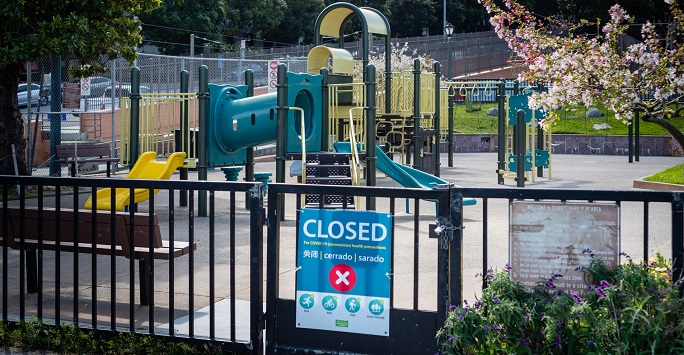
April 2 marked the 14th anniversary that the day was designated as World Autism Awareness Day by the United Nations (UN). Aiming to increase understanding and acceptance of people with autism, autism friendly and educational events will take place throughout the month of April. We take this opportunity to discuss the prevalence of autism and in particular the research that has been done at Liverpool to highlight in particular the legal challenges children with autism face in the context of accessing their educational and health care rights.
According to the World Health Organisation (WHO), autism refers to “a range of conditions characterised by some degree of impaired social behaviour, communication and language, and a narrow range of interests and activities that are both unique to the individual and carried out repetitively”. Globally, 1 in 160 children have autism while in the UK, around 700,000 children and adults have been diagnosed as autistic. Many legal strides in this domain have been made, which include the increased recognition of the human rights of children with autism under both the UN Convention on the Rights of the Child (CRC) (1989) and the UN Convention on the Rights of Persons with Disabilities (UNCRPD) (2006), in addition to disability related protection at regional and domestic level. Notwithstanding such advances, children (and adults) with autism continue to endure disproportionally negative outcomes across all traditional benchmarks including education, employment, health and indeed, life expectancy itself. On this 14th anniversary of World Autism Awareness Day and in light of the impact which Covid-19 has had on the delivery of services for autistic children, this blog post reflects on some of the challenges and indeed, opportunities which exist for enhancing the educational outcomes of autistic children (and ultimately adults) in England.

Children with Autism: Rights versus Reality
On paper, human rights law accords children with autism a wide array on entitlements. In combination, both the CRC and UNCRPD ringfence children’s rights across multiple important areas. These include the right to education (Articles 28 & 29 CRC: Article 24 UNCRPD), the right to health (Article 24 CRC: Article 25), the right to participate in matters and decisions which affect them (Article 12 CRC: Article 3(1) UNCRPD), the right to equality and non-discrimination (Article 2 CRC: Article 5 UNCRPD), the right to have their best interests upheld (Article 3 CRC) and the right to an adequate standard of living (Article 27 CRC: Article 27 UNCRPD), amongst others. However, despite their objective textual appeal, the daily reality for autistic children is far removed from the content of these legal guarantees.
According to the UN, one in three children with disabilities, which also includes autism, of primary school age is out of school, compared with one in seven children without disabilities. Similarly, rates of attendance, literacy, and primary school completion are all lower for children with disabilities. UNICEF has recently concluded that of the 93 million children globally with a disability, approximately half are not in school. According to the UN Department of Economic and Social Affairs, 80% – 90% of disabled people of working age in developing countries are unemployed, with the figure standing at between 50%-70% for industrialized countries. Although such figures do not exclusively comprise of people with autism, they do nonetheless include them and typify the negative educational and employment opportunities which they frequently, if not predictably, endure.
Domestically in England, autistic children fall within a category whereby they are classified as having a special educational need or disability (SEND). Depending on the level and severity of need, they may possess an Education, Health and Care Plan (EHCP), which comprises a statutory document which sets out the legal obligations of local authorities to meet the educational and health care needs of the child concerned. The most recent governmental figures highlight that the most common type of need for children with an EHCP is in fact autism. Such a classification, sadly, renders these children, ipso facto, acutely vulnerable to having their education and employment opportunities diminished. Recent governmental figures illustrate that children with SEND experience vastly higher levels of school exclusions while they are also 25% less likely to be in sustained employment by the age of 27 in comparison to their non-SEND peers. According to the Education Policy Institute, SEND children who possess an EHCP are already 15 months behind their non-SEND peers by 5 years of age and that by the end of secondary school, they are, on average, over three years behind their non-SEND peers. Unsurprisingly therefore, progression rates to higher education (HE) for SEND children are significantly lower than their non-SEND peers, with governmental data highlighting that only “18.4% of pupils identified with special educational needs in year 11 entered HE by age 19, compared to 48.0% of pupils who were not identified with special educational needs in year 11”. Further, recent governmental figures indicate a growing level of educational segregation, whereby the number of children attending state-funded special schools in England has increased annually since 2006. Such figures also show that 97.9% of these children have an EHCP. Thus, the educational realities for children with SEND, the vast majority of whom are autistic, highlights the anomalous situation whereby their human rights and lived realities are almost antithetical to one another.

The Children and Families Act 2014: An Opportunity for Change?
Provision for SEND children in England, including those with autism, was radically overhauled by the enactment of Part 3 of the Children and Families Act 2014. Supplemented with a new Code of Practice to guide the delivery and implementation of this new legal framework, the defining aspect of these changes was the introduction of EHCP’s, which were “to meet the special educational needs of the child or young person, to secure the best possible outcomes for them across education, health and social care and, as they get older, prepare them for adulthood”. This legal recognition of the fact that health and social care support are inseparable from the wider educational and employment development of autistic children also reflects the fact that autism regularly, though not always, co-occurs with other physical, intellectual or mental illnesses. According to the Westminster Commission on Autism:
Autism is not a mental health condition but according to one study, 70% of autistic children meet the criteria for a co-occurring mental health condition, and 40% meet the criteria for two. Autism is not a learning disability but a significant proportion of autistic people have a learning disability (prevalence estimates vary but are often quoted to be approximately 50%)
However, the implementation of EHCPs has not been unproblematic. Research indicates that that the system for ensuring that children and young people receive the support they are entitled to is typified by confusion, unlawful practices, bureaucratic nightmares, buck-passing, a lack of accountability, inadequate resources and an overly adversarial process for parents. Evidence at the more local level corroborates such practices. In a qualitative investigation into SEND provision in the Liverpool/Merseyside area, which involved the parents of 26 children, twenty of whom were autistic, Byrne et al highlighted that service provision failed to occur within the prescribed legal time limits. Further, that the overall navigation of the SEND system was antagonistic in practice and tarnished by accountability and transparency failures, all of which negatively impacted service provision for children with disabilities.

The Impact of Covid-19 on Autistic Children
Covid-19 has had an unforgiving and devastating impact on autistic children. With the closure of schools, recreational facilities and disruptions to health and social care provision, daily routines were overturned, and essential interventions discontinued. Indeed, one of the early legislative enactments passed by Parliament involved the formal downgrading of the legal entitlements of SEND children, including those with autism. And while the full impact of Covid-19 is yet to fully reveal itself, early indications suggest that its impact on autistic children has been particularly acute. Research by University College London indicates that “86% of family carers think that the needs of autistic people and their families have not been adequately addressed during Covid-19”, while research by the National Autistic Society states that:
Coronavirus has made completing school tasks more challenging, robbed autistic young people of essential social contact, and exposed the lack of autism understanding in education professionals. According to our survey, 68% of family members said their autistic child was anxious at the loss of routine and 65% couldn’t do online work
Moreover, in their submission to the House of Commons Education Committee on the impact of Covid-19 on Education and Children’s Services, based on survey evidence from 234 parents and implicating 243 SEND children, 53% of whom were autistic, we highlighted the devastating impact which Covid-19 was having on SEND children. This included evidence of worryingly different levels of communication between schools and parents in relation to their children’s education, with 14.7% of those surveyed reporting having received no contact at all from their child’s educational provider. Further evidence of declining mental health, increased anxiety, social regression, behavioural breakdowns, and a cessation to essential health and therapeutic services were recurrent themes within the responses received.
.jpg)
Looking Ahead
While Covid-19 has had an incalculable impact on children with autism, children with SEND and their families and carers, it is equally important to remember that service provision was already fraying at the seams prior to Covid-19. Those difficulties have been exacerbated by this pandemic. However, what is also clear is that the Children and Families Act 2014 and its accompanying Code of Practice, though imperfect, do contain important legal guarantee’s regarding the education, health and social care needs of autistic children. What is required to ensure their effective implementation is appropriate and ongoing training of staff and professionals involved in SEND service provision, including those working in education and local government. Additionally, in view of the central role which local authorities play in the delivery of SEND services, every local authority should recruit a SEND lawyer so that the legal obligations and timeframes within the new legal framework are complied with. While this will not remedy the system of all obstructions, it could however ensure that the legal framework itself is adhered to, and therefore restore organisational probity and rights-based compliance to SEND service delivery at local government level. Therefore, in avoiding delays, children with autism could receive the support they are legal entitled to and the chasm between rights and reality can start to be bridged.
Professor Amel Alghrani (University of Liverpool) & Dr Seamus Byrne (Northern Ireland Human Rights Commission)
If you are interested in studying in the School of Law, visit our study pages.